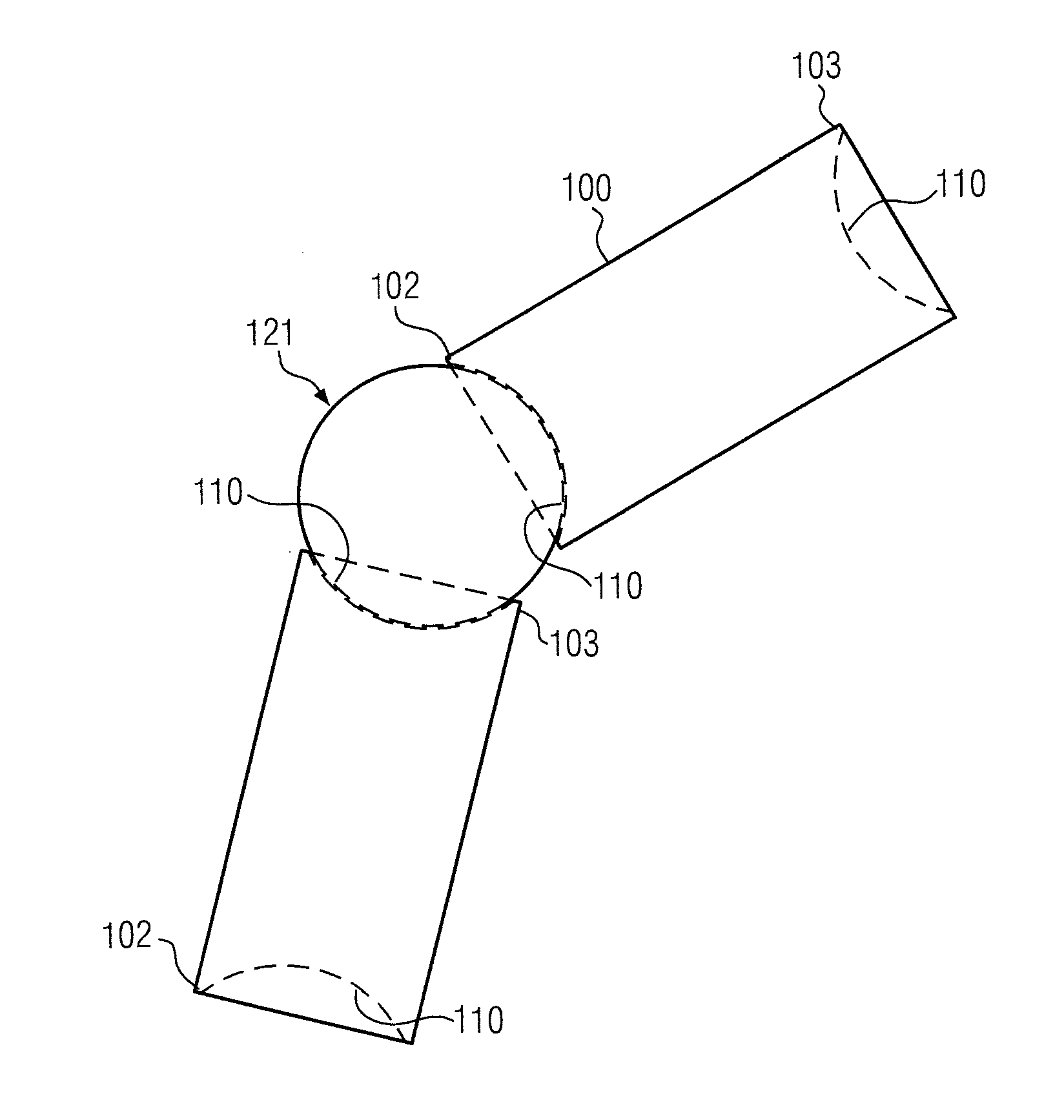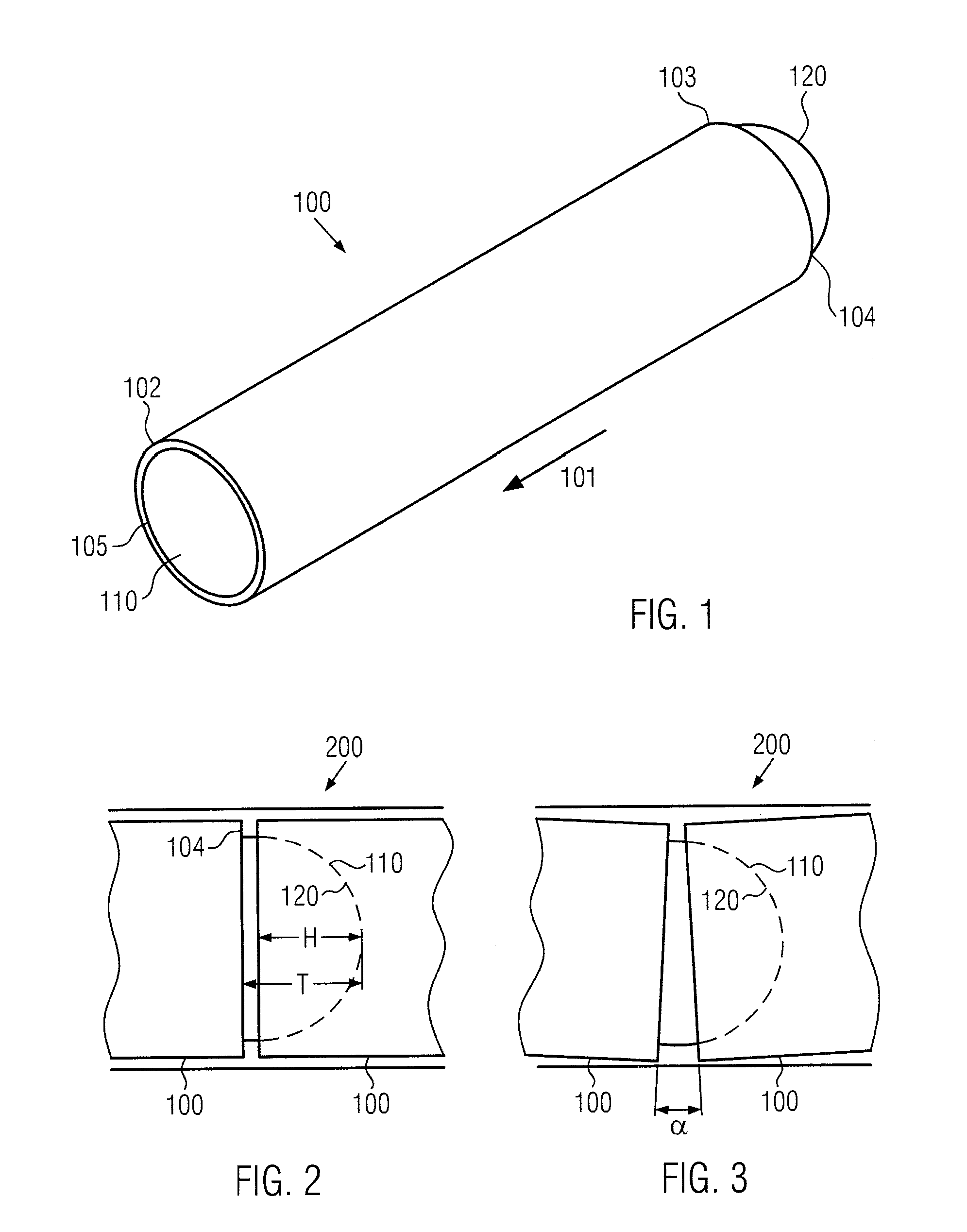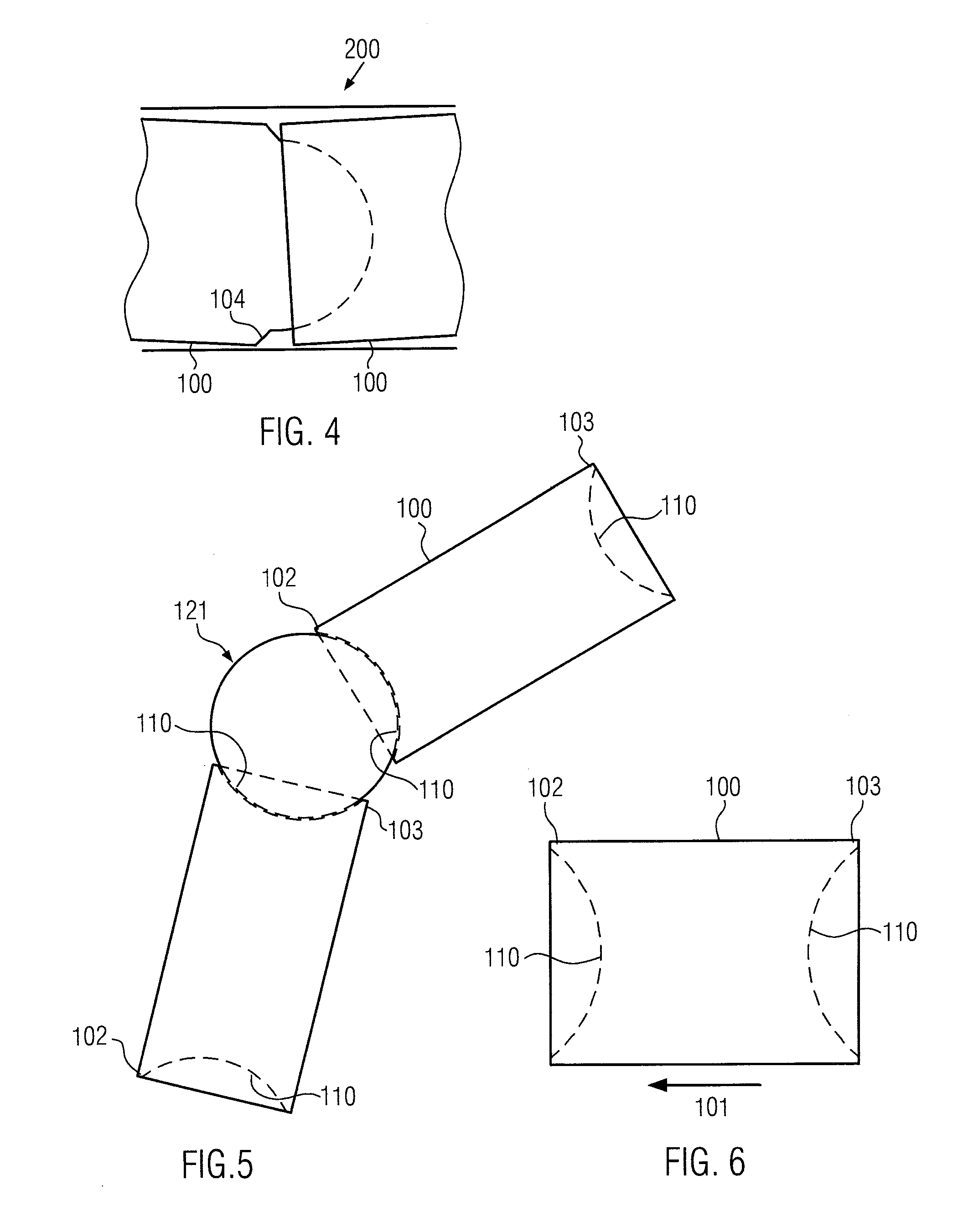Magnetic core element, magnetic core module and an indictive component using the magnetic core module
- Summary
- Abstract
- Description
- Claims
- Application Information
AI Technical Summary
Benefits of technology
Problems solved by technology
Method used
Image
Examples
second embodiment
[0043]FIG. 5 shows the present invention. In this case, the magnetic core element 100 preferably has a spherical recess 110 at the first end 102 and the second end 103 respectively. A variably adjustable, bent connection of at least two of the magnetic core elements 100, each having the spherical recess 110 at the first and second ends 102, 103, is achieved by a connecting sphere 121. Thus, it is possible to realize an even greater mounting angle as compared to the sphere / cup end contour. The use of the connecting sphere, respectively, magnetic sphere 121 furthermore allows the joining of several cores to one nodal point. Thus, for example, three or four magnetic core elements 100 can be connected to one another by one magnetic sphere 121.
[0044]FIG. 6 shows a schematic view of the magnetic core element 100 of the second embodiment of the present invention, which has the spherical recess 110 at its first and second ends 102, 103 respectively. The magnetic core element 100 may further...
third embodiment
[0045]FIG. 7 shows the present invention. In this case, the magnetic core element 100, having a rod shape with a rectangular cross-section, preferably has a cylindrical recess 110 at the first end 102 and a cylindrical connecting protrusion 122 at the second end 103. This embodiment is characterized by a very flat design, along with a high magnetic cross-section.
[0046]Moreover, the rectangular cross-section may comprise a cylindrical recess 110 at the first and second ends 102, 103 respectively. A variably adjustable, bent connection of at least two of the magnetic core elements 100, each having the cylindrical recess 110 at the first and second ends 102, 103 respectively, is achieved by a cylindrical connecting piece.
[0047]FIG. 8 shows a connection of at least two magnetic core elements 100 by means of a tension spring system. In this case, each magnetic core element 100 includes a holding member 130, 131, which is preferably made of plastic, so as to connect the spherical magnetic...
PUM
 Login to View More
Login to View More Abstract
Description
Claims
Application Information
 Login to View More
Login to View More - R&D
- Intellectual Property
- Life Sciences
- Materials
- Tech Scout
- Unparalleled Data Quality
- Higher Quality Content
- 60% Fewer Hallucinations
Browse by: Latest US Patents, China's latest patents, Technical Efficacy Thesaurus, Application Domain, Technology Topic, Popular Technical Reports.
© 2025 PatSnap. All rights reserved.Legal|Privacy policy|Modern Slavery Act Transparency Statement|Sitemap|About US| Contact US: help@patsnap.com



